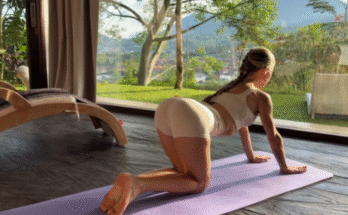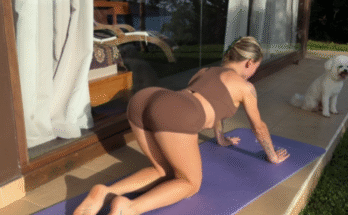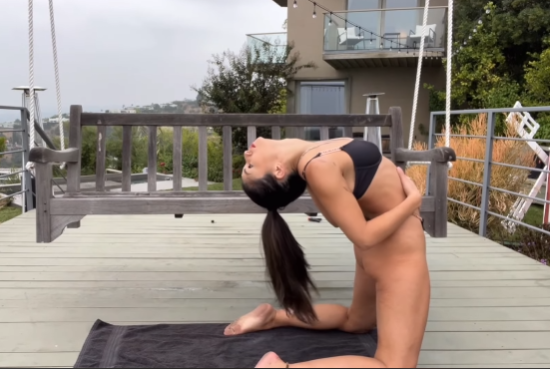
A flexible and healthy back is essential for overall well-being. It supports good posture, reduces tension, alleviates pain, and allows the body to move freely. A dedicated back flexibility stretch flow can open tight muscles, mobilize the spine, and create a sense of lightness and energy throughout the body. This full-length routine is designed to improve spinal mobility, stretch the surrounding muscles, and cultivate both strength and relaxation.
Begin in a comfortable seated position on your mat, either cross-legged or with legs extended in front of you. Close your eyes, rest your hands gently on your knees, and take a few deep breaths. Inhale slowly through the nose, expanding the chest and belly, and exhale fully, releasing any tension in the shoulders, neck, and back. Centering your mind before moving your body allows the nervous system to relax, helping your back respond more effectively to stretches. Visualize your spine elongating with each inhale and releasing tightness with every exhale.
Start with gentle neck stretches to relieve tension in the upper spine. Slowly tilt your right ear toward your right shoulder, holding for three to five breaths, feeling the stretch along the left side of your neck. Switch sides. Then, lower your chin toward your chest and gently roll your head in a circular motion, loosening the muscles along the back of the neck. These simple movements release stiffness that can accumulate overnight or from prolonged sitting, improving flexibility in the cervical spine.
Transition into a seated cat-cow flow. Place your hands on your knees or thighs. Inhale as you arch your back, lift the chest, and gaze slightly upward for cow pose. Exhale as you round the spine, tucking the chin toward the chest for cat pose. Repeat five to ten times, moving slowly and with control. This flow warms up the spine, increases flexibility, and massages the surrounding muscles, including the abdominals and shoulders, preparing the back for deeper stretches.
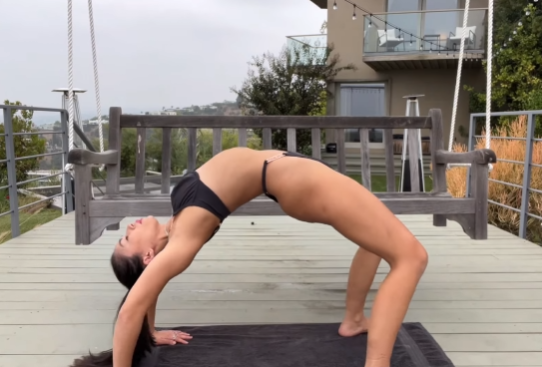
Next, move onto a tabletop position on hands and knees. Ensure your wrists are directly under your shoulders and your knees under your hips. Perform dynamic cat-cow movements again, but this time focus on articulating each vertebra, moving one segment of the spine at a time. This increases spinal mobility, encourages proper alignment, and gently stretches the erector spinae muscles along the back. Add a gentle hip circle by shifting the hips in small circular motions to loosen the lower back and hip joints.
From tabletop, flow into thread-the-needle stretches to target the upper and mid-back. Slide your right arm under your left arm, lowering your shoulder and temple to the mat, extending your left arm overhead or placing it on your lower back. Hold for five breaths, feeling the twist along the spine and the stretch in the shoulders. Switch sides. This pose opens the chest, releases tension in the mid-back, and promotes rotational flexibility, which is often limited in sedentary lifestyles.
Move into a downward-facing dog position, lifting the hips toward the ceiling and pressing the heels toward the floor. Keep the knees slightly bent if needed to prevent over-stretching. Focus on elongating the spine, reaching through the crown of the head, and creating space between each vertebra. Downward dog stretches the entire back, shoulders, and hamstrings while strengthening the arms and improving circulation to the spine. Rock gently side to side to loosen the shoulders and release tension in the lower back.
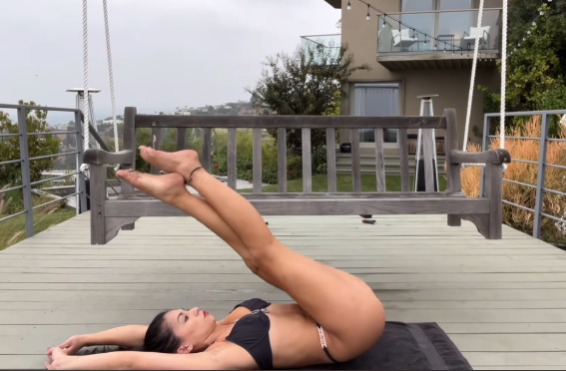
For the lower back, step into a low lunge on the right side. Step the right foot forward between your hands, keeping the left knee on the mat. Inhale, lift the torso, and raise your arms overhead. Exhale as you gently sink into the hips, feeling the stretch along the left hip flexor and lower back. Hold for five breaths, then switch sides. Tight hip flexors can pull on the lower spine, so opening the hips is essential for back flexibility and pain prevention.
Next, lie on your back for a series of spinal twists. Draw your knees into your chest, extend your arms out to a T-shape, and slowly lower both knees to the right, turning your head to the left if comfortable. Hold for five breaths, feeling the rotation along the spine and the release in the lower back muscles. Switch sides. Spinal twists help mobilize the vertebrae, relieve tension, and stimulate circulation, which nourishes the spinal discs and surrounding tissues.
For the thoracic spine, incorporate a bridge pose. Lie on your back with knees bent, feet hip-width apart. Press through the heels and lift your hips toward the ceiling while engaging the glutes and core. Interlace your fingers beneath your body and press the hands into the mat for additional support. Hold for five breaths, then slowly lower the hips. Bridge strengthens the back muscles while simultaneously stretching the chest, shoulders, and spine, improving overall flexibility and posture.
Move into a seated forward fold, keeping the legs extended in front of you. Inhale to lengthen the spine, exhale as you hinge at the hips, reaching for your feet or shins. Keep the back long, allowing the spine to stretch gently. Forward folds stretch the entire back body, including the erector spinae, hamstrings, and calves, promoting flexibility while calming the nervous system. Hold for five to eight breaths, allowing gravity to assist in the stretch rather than forcing it.

For deeper relaxation and lengthening of the spine, lie on your back and extend your arms overhead, reaching long through the fingertips. Engage the core lightly and press your lower back into the mat if comfortable, creating gentle traction along the spine. Close your eyes and breathe deeply, visualizing each vertebra expanding and releasing tension. This position integrates all the stretches from the flow and provides a moment of mindful awareness for the spine.
Finally, end the session with Savasana. Lie comfortably on your back, legs extended, arms at your sides, palms facing upward. Close your eyes and focus on your breath. Inhale fully, feeling energy rise along the spine, and exhale slowly, releasing any remaining tension. Stay here for several minutes, allowing the body to absorb the benefits of the back flexibility flow. This restorative pose allows the nervous system to reset and helps the muscles relax fully, promoting healing and improved posture.
Throughout this back flexibility stretch flow, it’s important to move mindfully, listen to your body, and honor its limits. Gentle stretching with focused breath enhances flexibility gradually, strengthens supporting muscles, and promotes spinal health. Regular practice can reduce back stiffness, improve posture, prevent injury, and increase overall mobility.
Incorporating this flow into your daily routine not only improves back flexibility but also positively affects overall well-being. A flexible spine allows for better movement in daily activities, reduces the risk of injury, and supports a sense of ease and comfort in the body. Additionally, mindful breathing and intentional movement reduce stress, release tension, and cultivate mental clarity, creating a holistic approach to back health.
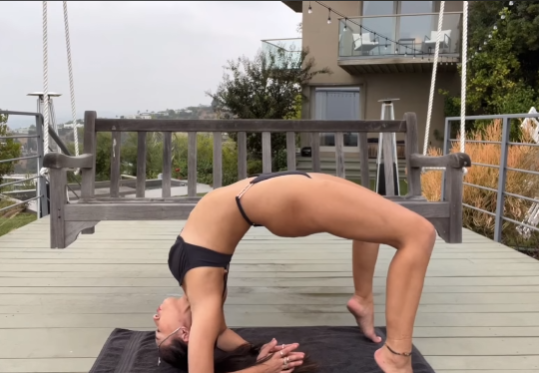
By dedicating time to a back flexibility stretch flow, you are investing in the long-term health of your spine and surrounding muscles. Every pose, every breath, every gentle movement contributes to increased mobility, reduced tension, and improved posture. Whether performed in the morning to awaken the body or in the evening to release accumulated tension, this routine provides a foundation for spinal health, strength, and resilience.
As you rise from your mat, notice the difference in your body. Your spine feels longer, the muscles along your back are looser, and your shoulders and hips are more open. Carry this sense of ease, energy, and flexibility into your daily life. Regular practice ensures that your back remains strong, healthy, and capable of supporting all of your movements, while also contributing to your overall physical and mental well-being.
Back flexibility is essential for a life of movement, freedom, and comfort. With this stretch flow, you have a simple, effective, and holistic routine to maintain spinal health and increase overall flexibility. By combining gentle stretches, mindful breathing, and restorative poses, you can create a strong, supple, and pain-free back that supports both your body and mind in everyday life.

